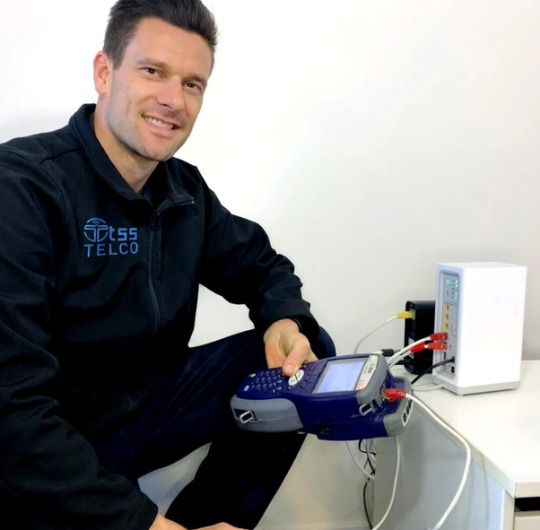Link
0 notes
Text
NBN Technicians
Almost every house in Australia is going to be migrated to NBN at some point. If you haven’t already switched to NBN, you will need to contact your preferred telecommunications service provider to confirm the timing and arrange for a new NBN service.
Remember that most customers don’t need to contact NBNco directly; the work required by NBN technicians is usually arranged by your service provider, with some exceptions such as a brand new building or recent subdivision.

There are different types of NBN connections:
Fibre to the Premises (FTTP) (aka Fibre to the Home; FTTH)
Fibre to the Node (FTTN)
Fibre to the Building (FTTB)
Fibre to the Curb (FTTC)
Hybrid Fibre Coaxial (HFC)
Fixed Wireless (FW)
Satellite (Sky Muster)
If you’d like to know what type of NBN connection is available to your premises, you can ask your service provider or use the search tool at https://www.nbnco.com.au/
Want to know how an NBN install is done for each technology type? Here are some of the processes:
Fibre to the Premises (FTTP)
The NBN technician will install the fibre optic cable from the street to the building and install an NBN Utility Box on the outside wall of the building, then install a fibre optic cable from the Utility Box to an NBN Connection Box (FTTP NTD box) somewhere on an inside wall.
The modem router is to be connected to the NBN Connection Box. The modem router can be directly connected to the NBN Connection Box with an Ethernet cable. But if you want the modem router placed in a different part of the house/building, it can be connected through data cabling. This data cabling installation can be done by a TSS Telco – private NBN technician.
*Note, it is preferable to have the modem router installed in a location next to a computer or somewhere that is central for all the wifi devices (computer, laptop, TV, smartphone, tablet etc.)
0 notes
Photo

Is your poor internet affecting home life? Are you tired of having wifi problems? Do you need faster, more reliable internet for work or study? Help is here!
0 notes
Text
NBN HYBRID FIBRE COAXIAL
Getting connected to NBN can be a challenging time for many different reasons. And if you do get stuck with NBN or your service provider, the last thing you want to deal with is talking to someone who is rattling off technical jargon that you don’t understand. But let us help make it a bit easier for you.
There are 7 different types of NBN and this article is to help alleviate some of the confusion relating to NBN HFC.
What is HFC NBN?
It stands for Hybrid Fibre Coaxial. As you can see according to its name, HFC uses a combination of both Fibre and Coaxial cable to deliver a connection. This type of NBN uses a lot of the existing cabling that has been used for Foxtel cable TV and Telstra cable broadband. It was formally Telstra’s coaxial infrastructure. If a coaxial cable is already installed from the street to your home or workplace, you should be NBN ready. But if it isn’t a technician will be required to install the cabling. The points used are called a ‘cable point’ or ‘F-type socket’. This is different to a phone point and is connected by screwing the cable onto it. HFC is comparatively faster than connections like Fibre to the Curb, or Fibre to the Node because it has a larger coper conductor inside the cable.
How fast is HFC NBN?
When you plan or sign up for an NBN HFC connection, you’ll have to choose from one of six different speed options: These are:
1.NBN 12 (Basic I) speed,
2.NBN 25 (Basic II) speed,
3.NBN 50 (Standard) speed,
4.NBN 100 (Fast) speed,
5.NBN 250 (Superfast) speed or
6.NBN 1000 (Ultrafast) speed.
0 notes
Link
0 notes
Link
TSS Telco is a business that provides you with a private technician to help you with your internet when your service provider won’t.
0 notes
Link
0 notes
Link
Internet Connection Repairs
Are you curious about what Wi-Fi calling is all about? Here’s the rundown on what you need to know. Wifi calling gives you the ability to have a clear uninterrupted call on your mobile, even if you are in an area with a weak mobile signal or no signal at all.
0 notes
Link
0 notes
Link
0 notes
Link
0 notes
Link
0 notes
Link
0 notes